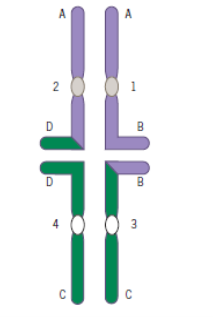#Question id: 1757
#Unit 4. Cell Communication and Cell Signaling
What is the first event following the production of CH germline transcripts by immunoglobulin genes?
#Question id: 1758
#Unit 4. Cell Communication and Cell Signaling
The specificity of antibody secreted by a B-cell may not be the same as that of the surface Ig of the clonal parent because of:
#Question id: 1759
#Unit 4. Cell Communication and Cell Signaling
What is the major long-term source of a foreign antigen in the body?
#Question id: 1760
#Unit 4. Cell Communication and Cell Signaling
Effector memory T-cells can be distinguished from the central memory T-cells from which they arise by:
#Question id: 1761
#Unit 4. Cell Communication and Cell Signaling
Which of the following statements is TRUE of cytokines?
#Question id: 1762
#Unit 4. Cell Communication and Cell Signaling
What do Th1 cells secrete?

